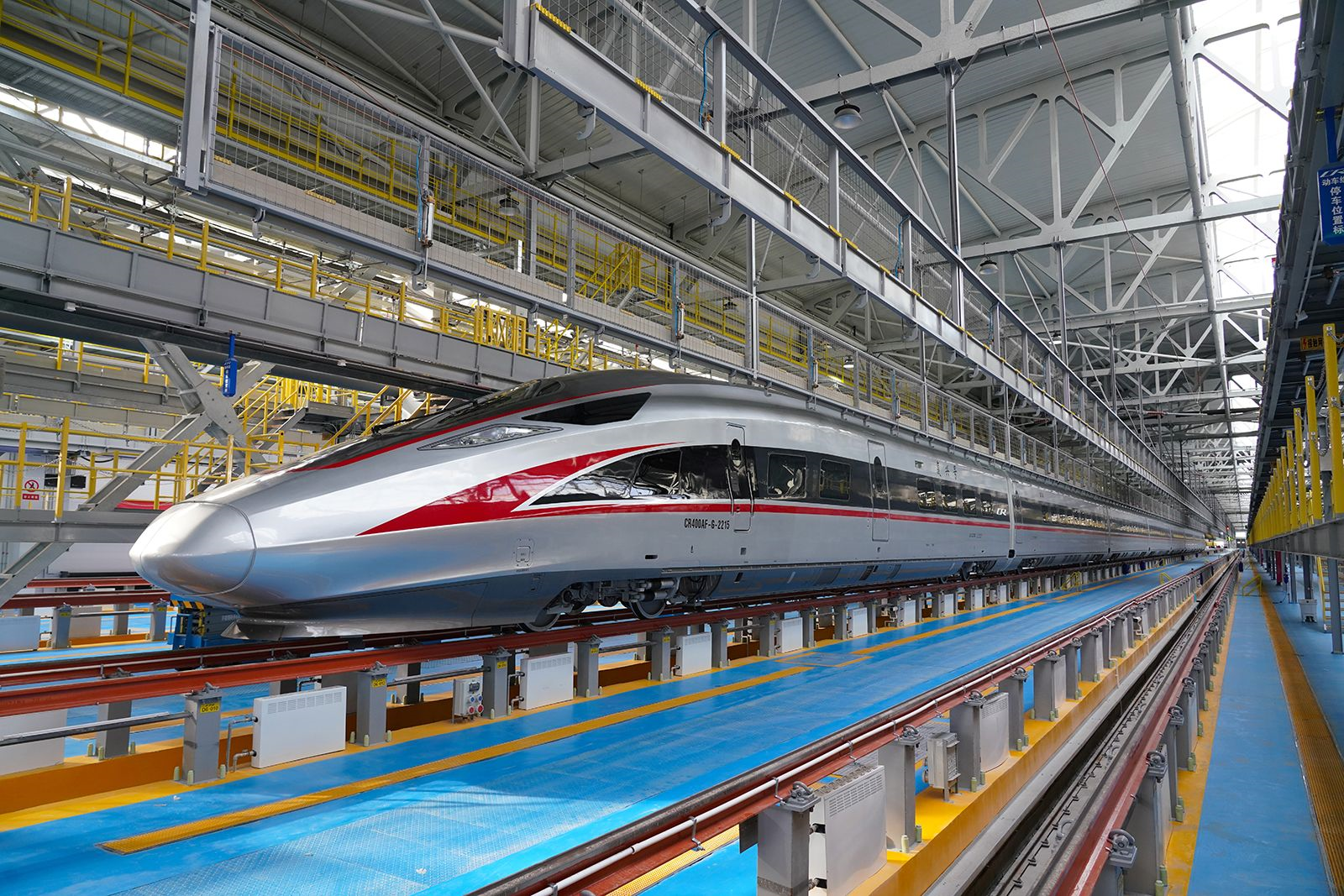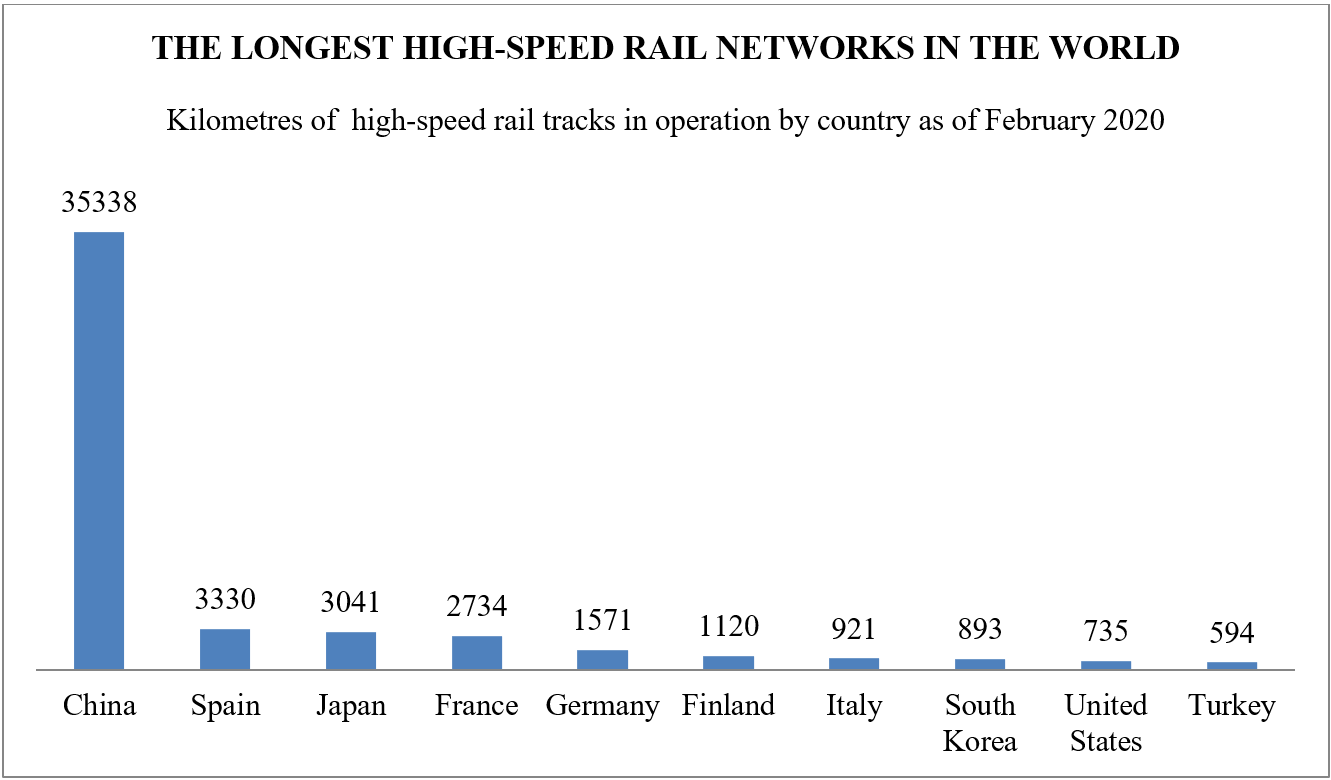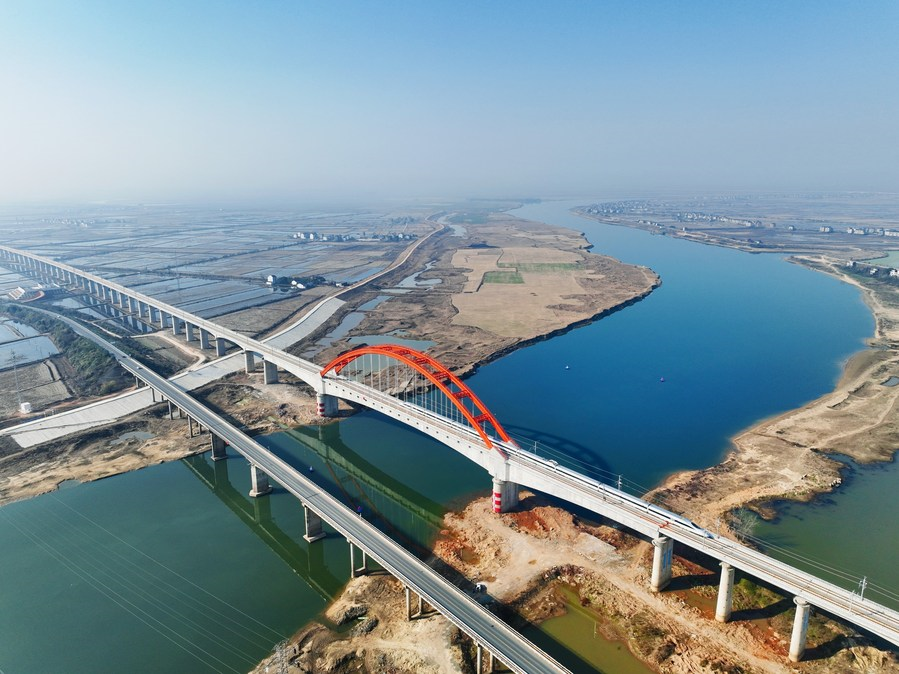China’s High-Speed Rail: Fast Track to High-Quality Development

China's latest bullet train can withstand extreme cold temperatures. Chen Zhonghao/Xinhua/Getty Images
The 12th World Congress on High-Speed Rail kicked off in Beijing, capital of China on July 8, 2025. Jointly hosted by the China State Railway Group and the International Union of Railways (UIC), a worldwide professional association representing the railway sector and promoting rail transport, the four-day event is a global platform for showcasing breakthroughs, sharing ideas and enhancing international cooperation in the railway sector. Themed ‘‘High-Speed Rail: Innovation and Development for a Better Life,’’ the opening ceremony of the event billed as an international industry gala brought together more than 2,000 participants from over 60 countries, including corporate executives, railway technical personnel, government officials, and representatives from international organizations. Since its premier edition in 1992, the Congress organized every 2-3 years, has so far convened 11 times, becoming the most prominent global event on high-speed rail, tackling both HSR operation and technology-related issues. At the opening ceremony of its latest event, Chinese Vice Premier Zhang Guoqing reiterated China’s commitment to help advance high-speed rail development worldwide, and uphold the vision of extensive consultation, joint contribution and shared benefits.
In less than two decades, China, which had no high-speed railways at the beginning of the 21st century, has built the largest and most advanced high-speed rail network in the world, and by 2020, seventy five percent of Chinese cities with a population of 500,000 or more had a high-speed rail link. At the initial stage, China relied on high-speed technology imported from Europe and Japan, however, over the last decade; Chinese enterprises have developed into world leaders in high-speed train technology and engineering, contributing to revolutionizing long-distance travel. At present, Chinese enterprises are ranked among the first in the world to introduce new technologies including autonomous (driverless) train operation and advanced signalling and control technology, thanks to the country’s rapidly expanding network.

Note: Finland has no dedicated high-speed rail lines but sections of its railway network are
capable of running speeds of 200 km/h (124mph)
Source: International Union of Railways (UIC)
As of the end of 2024, the total length of China’s operating high-speed rail network stood at 48, 000 kilometres, representing more than 70 percent of the global total, and accounting for the largest share of railway passenger trips in the country. Connecting bustling cities with remote villages, China’s high-speed railways, the busiest network in the world, handled nearly 3.3 billion passenger trips last year, marking a 12.9 percent year-on-year increase and accounting for 75.9 percent of all railway passenger trips in the country. China’s rapidly expanding high-speed rail network, which at present connects 97 percent of Chinese cities with a population of 500,000 or more, serves as an engine for socio-economic transformation, providing essential support for high-quality development.

This aerial photo taken on Dec. 27, 2023 shows a high-speed train passing a grand bridge at Poyang Lake on Hangzhou-Nanchang high-speed railway in east China. (Xinhua/Xing Guangli)
By truncating travel time for people, goods, and services, and connecting urban areas to rural communities, China’s high-speed rails help facilitate access to essential resources including healthcare, education, markets, and tourism destinations, supporting productivity, trade, and overall economic activity, while contributing to environmental sustainability. A study (2021) conducted by researchers in Singapore, Hong Kong and the Chinese mainland, and published by the Journal, Nature Climate Change, show high-speed railway networks led to an annual reduction of nearly 11.2 million metric tons of carbon dioxide equivalent greenhouse gas emissions by replacing road traffic, equal to 1.33 percent of greenhouse gas emissions in China's transport sector. Additionally, the researchers found that Beijing-Shanghai High-Speed Railway, one of China's busiest high-speed railway lines which opened in 2011 led to the highest overall reduction of emissions of 2.39 million tons per year on average.
So far, China’s high-speed rail network has carried more than 22.9 billion passenger trips, with its Fuxing bullet trains operating at commercial speeds of up to 350 kilometres per hour. On peak days, the country operates up to 10,000 high-speed train services, transporting a staggering 16 million trips daily. Supported by its massive high-speed rail network which meets the demand for convenient and comfortable travel, in 2024 China’s GDP expanded 5 percent year on year, meeting the government’s full year target. In December 2024, China unveiled a prototype of the world’s fastest train, the CR450 high-speed train. With a test speed of up to 450kilometres per hour and an operational speed of 400kilometres per hour, the CR450 highlights China’s cutting-edge advancement in rail technology and contributions to global rail technology.
By 2030 China aims to expand the length of its operating high-speed tracks to around 60,000 km. Ultimately, the expansion will not only further enhance connectivity across China’s urban and rural communities, and help improve living standards, but also serve as a cornerstone for the Belt and Road Initiative, contributing to slash travel time, while supporting economic activity and social transformation outside China. For example, since the Jakarta-Bandung High-Speed Railway commenced commercial operation in 2023, the project, which marks the first time the entire industrial chain of China’s high-speed railways are located overseas, has significantly enhanced connectivity in Indonesia. Spanning a total of 142 kilometres, with a design speed of 350km per hour, the Jakarta-Bandung High-Speed Railway, the first high-speed railway in Southeast Asia, had transported more than 10 million passengers as of June 2025, reducing travel time between Jakarta and Bandung from over 3 hours to just 45 minutes. Committed to high-level opening up, China through platforms including the 12th World Congress on High-Speed Rails and the Belt and Road Initiative aims to share its expertise and experiences in the field of high-speed railways with other countries, to strengthen international cooperation, and foster high-quality development.
About the author: Alexander Ayertey Odonkor is the founder and leading expert at the Ghana Centre for China Studies, Africa’s preeminent and most comprehensive platform exclusively dedicated to authoritative interpretation of China’s domestic and foreign policies.
Production credits: This commentary is produced by the Ghana Centre for China Studies.
At the Ghana Centre for China Studies we eschew specific policy positions. All positions and opinions expressed in this publication are solely those of the author (s).